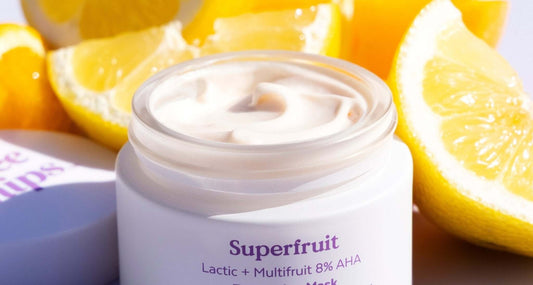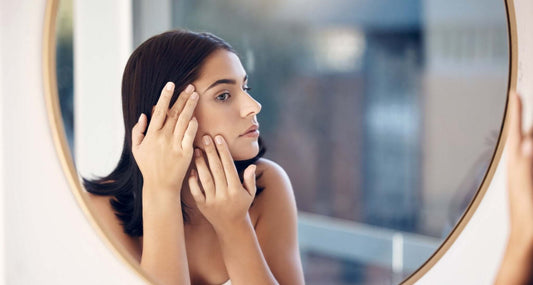Deanna Utroske is a life-long writer and an advocate for the success of women in and beyond business. She specializes in content development for the cosmetics and personal care industry, and is a globally sought-after thought leader in the beauty business community. Deanna is, perhaps, best known for her news articles and video interviews on the B2B site CosmeticsDesign.com and for her #duviews video commentary series on LinkedIn.
Her writing and insights have also been featured in market research reports and in publications such as NewBeauty Magazine, Beauty Store Business Magazine, on Beauty Independent, CoveyClub.com, CEW.org, Stylist.fr, Woman’sDay.com, The Huffington Post, PBS Media Shift, Publishing Executive, and cited on Wikipedia. Deanna lives in New York City.

How did you start writing and editing for the beauty industry?
After decades as a dancer, a stint in the auto industry, and a lifetime of writing, I have come to recognize that I understand the world around me in terms of systems and rhythms. That’s how I make sense of ideas and language.
And it is why communications and content are a couple of the things that I do best. So when a friend of a friend asked me to help find a candidate to fill an open role at the online trade publication Cosmetics Design, I realized that I was that candidate even though (at the time) I had no experience in beauty.
What does a typical work day look like?
A typical day as Editor of Cosmetics Design is full of writing. As the Editor and primary content creator for a digital-first B2B news site, I turn out news at a digital pace, publishing some 5 - 15 articles and/or videos each week.
I field a lot of emails from colleagues, PR pros, events producers, brand owners, ingredient makers…this list could go on forever. When possible, I task-batch my calls and video chats to a single day each week because they require a different sort of energy and attention than my other work does.
Frequently, I share my observations, predictions, and commentary with market research firms, magazines, blogs, and podcasts. And until we all found ourselves living through a pandemic, I regularly traveled across the US and around the world to attend tradeshows, learn about new beauty ingredient or packaging launches, talk with indie brand founders, spot trends, film live-to-tape video interviews, and make presentations on the trends and innovations shaping the future of beauty.

What does the term “clean beauty” mean to you?
Clean Beauty has no single widely accepted definition. But it’s always about ingredient transparency, consumer safety, environmental sustainability, and ethical business. (None of those concepts have a single widely accepted definition either.)
So, as a beauty consumer, I don’t take the term ‘clean’ at face value but rather explore what it means to each brand and decide for myself what products meet my standards and expectations in terms of origin, efficacy, and the brand’s business practices.
Why do you think people began looking closer at the ingredient labels of their skincare products compared to years ago?
Big picture, clean beauty is a response to consumers’ loss of trust in corporate business and global capitalism. On an individual level, consumers read beauty product ingredient labels because they want to decide for themselves what touches their skin.

Do you believe clean beauty is just a phase or another marketing ploy, or do you believe that it is the new norm and here to stay?
The entire beauty industry is moving toward clean. But even as that transition happens numerous factors come in to play: regularity issues, conventional supply chain practices, manufacturing infrastructure, retail details, global politics, consumer behavior, the challenges of environmental sustainability, and more.
Clean beauty not a phase. It is, at times, leveraged purely for marketing purposes. Still, before the entire global cosmetics and personal care industry can agree upon and zero in on what ingredient transparency, consumer safety, environmental sustainability, and ethical business all mean and look like in everyday practice, there is a lot of work to be done.
How different are the roles of independent brands vs. green-only retailers (e.g. Detox Market, Credo) in this movement?
For decades, indie beauty brands have educated consumers and done the proof-of-concept work to make clean beauty visible and viable in the current cosmetics, personal care, and fragrance marketplace. (Though it’s worth noting that not all indie brands describe themselves as clean or would want to.)
More recently, retailers like Credo, The Detox Market, Sephora, and QVC have all set clean beauty standards, effectively deciding what is and is not clean for the brands they partner with and the consumers they serve.
Are there specific niches within clean beauty that you’re currently interested in?
I am very interested in what’s coming next for clean beauty. So, I am watching the biodesign sector, paying attention to what’s possible in the ‘sophisticated naturals’ ingredient space, and am curious to see what will finally move the needle in pigments and allow new materials and colorants to be approved by the FDA for use in beauty products.

What are the biggest problems that still exist in clean beauty and could be better about this space?
The biggest challenge many clean beauty brands face today is packaging. If clean beauty really is about transparency, safety, sustainability, and ethical business, then finding clean packaging is nearly impossible. It’s not that there aren’t good options. It’s that the innovation and infrastructure needed for a truly circular packaging economy remain elusive.
What do you think is next for clean beauty?
I expect to see clean beauty make significant advances in supply chain traceability and full ingredient transparency in the near future.
Fragrance ingredients (in scented personal care and perfume) are some of the most challenging ingredients to list openly on a product package because the valuable, unique intellectual property that a fragrance house holds is the nuanced blends of natural and synthetic inputs that it takes to produce a given scent.
This is changing. Fragrance suppliers in both the independent supplier space (eg Palette Naturals) and legacy fragrance houses (eg Sozio) are sharing full scent ingredient lists with their customers—brands and products manufacturers—making it quite easy for brands to then include all fragrance inputs on their product labels.
And this lets the clean beauty consumer know what’s inside the product and make their own determination depending on any allergies or preferences they may have.
The newly popular beauty ingredient CBD is helping advance supply chain transparency in a similar way. Since the rules and regulations governing the cultivation, processing, interstate and international transport, claims, distribution, and sales of CBD vary widely and are still very much in flux, any reputable beauty brand that formulates with CBD takes care to explicitly track and trace every batch from harvest (or biotech production) to tube (or jar or pot or bottle).
And in doing so, CBD brands are setting a new standard for ingredient traceability that will—for clean beauty brands—be the norm. This standard means that a brand and their customers can more fully know the environmental sustainability and ethical impacts of the beauty products they purchase.

Where can we find you (social handles that you would like to share)?
You can find my beauty commentary videos by following #duviews on LinkedIn and keep up with all my work and find contact info at deannautroske.com.
And I’m also on Instagram @deannautroske, on Twitter @deannautroske, and on LinkedIn: Deanna Utroske.



